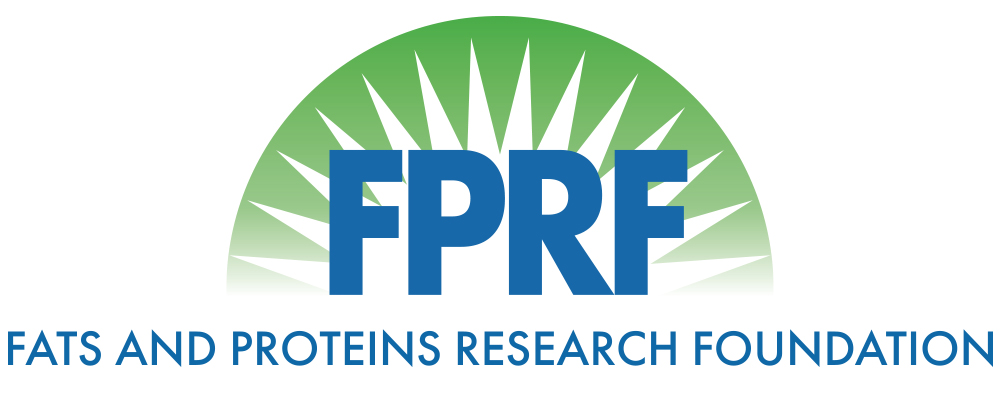Effects of Fat Addition to Rations Containing DDGS with Different Fat Content
Title: Effects of Fat Addition to Rations Containing DDGS with Different Fat Content
Principal Investigator: Jeffre Firman, University of Missouri
Keywords: broilers, turkeys, energy, fat addition, DDGS, yellow grease, nutrition, poultry, 2012, Firman
Year: 2012
Objective: To determine the effect of fat addition to diets containing high, medium and low fat DDGS in broilers and turkeys.
Lay Summary/Industry Summary:
In the recent past fat levels in DDGS have changed due to the extraction of corn oil during the ethanol production process. Due to the price of DDGS and the huge quantities available, continued and possibly increased use of DDGS is foreseen. However, the lowered fat content of the new products makes their use more difficult given the already reduced energy diets currently being fed. The objective of these studies was to determine if utilization of a rendered fat (yellow grease) could be used as a replacement for the fat removed from these products. Two experiments were conducted with three different treatments. The 3 treatments included the low fat DDGS, low fat DDGS + fat addition (yellow grease) to match a high fat DDGS and the high fat DDGS at 10% and 20% inclusion rate (starter and grow-finish diets). The low fat DDGS treatment without fat addition acted as the negative control and was fed as a direct replacement for the high fat DDGS to demonstrate any loss in performance. In each study these treatments were replicated 16 times with 30 broilers to 49 days or 10 tom turkeys to 19 weeks per pen. In the broiler trial there was no difference in weight gain between the treatments. Feed efficiency was significantly improved in the low fat DDGS + yellow grease treatment when compared to the other treatments. Feed efficiency was better in all cases with the high fat DDGS in all cases, but was not statistically different. Fat pad increased slightly in the yellow grease fed broilers as well and chilled carcass was larger as well. The turkey data, while more variable, followed similar trends. No differences were seen in weight gain, but the low fat DDGS treatment birds ate significantly more feed by the conclusion of the trial, and feed:gain was 7 points better for the low fat + yellow grease when compared to the low fat DDGS fed birds at the conclusion of the trial. Additionally, breast yield was significantly higher for the birds fed the added grease. In conclusion, while it is difficult to pick up statistical differences with such small changes in energy when feeding high fat versus low fat DDGS (> 60 kcal differences), it would appear that the replacement of the lost oil with yellow grease does restore feed efficiency in broilers and based on the increased feed intake of the low fat DDGS treatment, would also do so in turkeys.
Scientific Abstract:
In the recent past fat levels in DDGS have changed due to the extraction of corn oil during the ethanol production process as the value of the oil has been seen as a profitable addition to the process. Due to the price of DDGS and the huge quantities available, continued and possibly increased use of DDGS is foreseen. However, the lowered fat content of the new products makes their use more difficult given the already reduced energy diets currently being fed due to the high cost of fat addition. The objective of these studies was to determine if utilization of a rendered fat (yellow grease) could be used as a replacement for the fat removed from these products. Two experiments were conducted with three different treatments. The 3 treatments included the low fat DDGS, low fat DDGS + fat addition (yellow grease) to match a high fat DDGS and the high fat DDGS at 10% and 20% inclusion rate (starter and grow-finish diets). The low fat DDGS treatment without fat addition acted as the negative control and was fed as a direct replacement for the high fat DDGS to demonstrate any loss in performance. In each study these treatments were replicated 16 times with 30 broilers to 49 days or 10 tom turkeys to 19 weeks per pen. In the broiler trial there was no difference in weight gain between the treatments. Feed efficiency was significantly improved in the low fat DDGS + yellow grease treatment when compared to the other treatments. Feed efficiency was better in all cases with the high fat DDGS in all cases, but was not statistically different. Fat pad increased slightly in the yellow grease fed broilers as well and chilled carcass was larger as well. The turkey data, while more variable, followed similar trends. No differences were seen in weight gain, but the low fat DDGS treatment birds ate significantly more feed by the conclusion of the trial, and feed:gain was 7 points better for the low fat + yellow grease when compared to the low fat DDGS fed birds at the conclusion of the trial. Additionally, breast yield was significantly higher for the birds fed the added grease. In conclusion, while it is difficult to pick up statistical differences with such small changes in energy when feeding high fat versus low fat DDGS (> 60 kcal differences), it would appear that the replacement of the lost oil with yellow grease does restore feed efficiency in broilers and based on the increased feed intake of the low fat DDGS treatment, would also do so in turkeys.
Publications:
Kubas, T.A. and J.D. Firman. 2014. Effects of Fat Addition to Rations Containing DDGS with Different Fat Contents. International Journal of Poultry Science. 13: 437-441. http://free-journal.umm.ac.id
